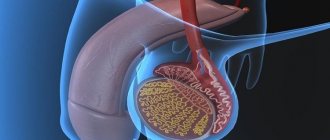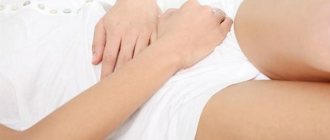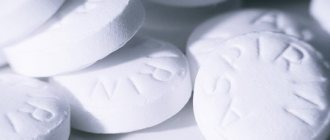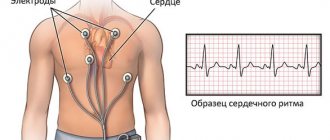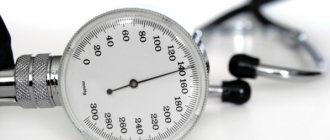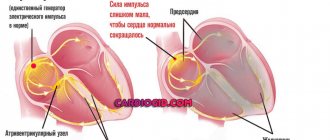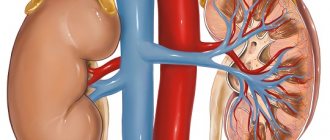Those who know first-hand what hemorrhoids are are familiar with many recipes for combating this disease. Each new remedy gives hope for getting rid of unpleasant symptoms. But some medicines, both folk and traditional, do not give the expected effect, and the patient is forced to continue the search. For many patients, potassium permanganate helps to significantly alleviate the condition of hemorrhoids.
This antiseptic is intended to treat many injuries to the skin and mucous membranes. It is widely used to treat diseases of the pelvic organs, including hemorrhoids. Its competent use together with other treatment methods gives positive results.
Who is at risk for hemorrhoids, and what are they like?
Every tenth person suffers from hemorrhoids. And every year the incidence is only growing. If previously it was believed that this pathology affects people mainly in mature and old age, now many young people are found among patients.
Hemorrhoids are varicose protrusions due to expansion of the venous wall of the hemorrhoidal veins of the rectum. Their localization is internal (in the intestinal cavity) and external (under the skin around the anus). Severe inflammatory phenomena in the nodes indicate an acute course of the disease, and the presence of nodes in the absence of obvious inflammatory reactions in them indicates chronic hemorrhoids.
Clinically, hemorrhoids are divided into 4 stages
The course of the disease can be complicated or uncomplicated.
The main prerequisites for the development of hemorrhoids are:
- sedentary work and a sedentary lifestyle impair blood circulation in the pelvic organs;
- lifting heavy loads (weightlifting, occupational hazards);
- pregnancy and childbirth;
- regular intake of spicy food and alcohol;
- genetically determined tendency to insufficiency of venous valves and weakness of the vascular wall of the veins;
- frequent constipation;
- the presence of other concomitant somatic pathologies (hypertension, liver and lung diseases).
Conservative treatment of hemorrhoids: indications for use and methods
The formation of hemorrhoidal “bumps” is a fairly common disease, which is characterized by dilation and inflammation of the venous vessel of the rectum. The main manifestations of the disease are a feeling of discomfort in the anus, burning, itching, prolapse of nodes and bleeding. The more advanced the stage, the more pronounced the symptoms.
There are internal and external hemorrhoidal plexuses. As a result of depletion of the venous wall and abundant stagnation of blood, the vessels stretch and bulge, forming nodular plexuses. Doctors consider the main cause of the development of the disease to be a hereditary predisposition, which causes degeneration of the connective tissues of the submucosal layer of the rectum and failure of the valve apparatus.
Concomitant factors for the development of the disease also include:
- Pregnancy and childbirth;
- Strong physical activity, professional sports;
- Sedentary lifestyle, “sedentary” or “standing” work;
- Poor nutrition;
- Alcohol abuse.
For the treatment of hemorrhoids, various methods of therapy are used, including conservative ones. It is aimed at eliminating primary symptoms (stage 1-2) or preventing the chronic form of the disease (stage 3-4). It is also advisable to use this method if there are contraindications to surgical intervention or during the period of postoperative rehabilitation. Drug therapy is not aimed at completely curing the cause of the disease. Its main goal is to slow down the development of pathological changes in the venous vessels and correct the patient’s lifestyle.
Drug therapy is prescribed in the following situations:
- Thrombosis of hemorrhoids is a clinical manifestation of formations in the anus with increased pain and bleeding during bowel movements. The trigger for the formation of the inflammatory process is prolonged constipation or diarrhea, stress from physical activity;
- Pregnancy – dilation of hemorrhoidal veins during the gestational period is a fairly common phenomenon. The key factor is physiological changes in a woman’s body associated with hormonal imbalance and an enlarged uterus, which begins to put pressure on the pelvic vena cava. The situation is aggravated by the presence of concomitant chronic diseases. As a rule, after the birth of the child, the symptoms disappear on their own and the condition of the blood vessels stabilizes.
- The individual characteristics of the patient’s body – reduced immunity, the presence of infections, cancer and a number of other chronic disorders – exclude the possibility of surgical treatment of hemorrhoids. In this case, drug therapy is the only sure way to relieve painful symptoms.
Methods of non-surgical treatment of hemorrhoids
Non-surgical methods can be used as monotherapy or complex treatment of hemorrhoidal “bumps”. The effectiveness of the chosen technique directly depends on the nature of the disease, the individual characteristics of the organism, the stage and the presence of pathological complications.
The most effective is an integrated approach to therapy, where general and local drugs are correctly combined. Each of them contains its own biologically active substances and the degree of impact on the problem. Treatment tactics depend on the complexity of the symptoms and can be aimed at relieving inflammatory or pain syndrome, stopping bleeding and normalizing venous circulation in general.
Non-invasive therapies include:
- Physiotherapy and physical activity restrictions are a list of additional procedures to the general therapy regimen. To relieve pain, therapeutic enemas, baths with a solution of potassium permanganate or herbs that have anti-inflammatory and antimicrobial effects are often used. To completely eliminate the factors of intra-abdominal pressure, doctors prohibit heavy physical activity and prolonged stay in the “sitting” position. Visiting baths, saunas, eating fatty and spicy foods, and drinking alcohol are also prohibited. Hiking and following a specific diet are prescribed;
- Following a diet and proper daily routine - diet correction has a positive effect on the cardiovascular system of the body. For hemorrhoids, it is recommended to include foods rich in fiber, green vegetables, berries, lean meat and fish in your diet. Daily breathing exercises will help normalize poor blood circulation and alleviate symptoms;
- Laxatives and other drugs that correct stool disorders - one of the main causes of inflammation of hemorrhoids is frequent constipation or diarrhea. Regular stimulation of normal bowel function with the right foods is necessary. If there is no positive result, doctors prescribe natural laxatives;
- Local preparations - antihemorrhoidal ointments and suppositories for external use effectively relieve pain in internal and external localization of hemorrhoids. Suppositories have antiseptic and wound-healing properties. Ointments have an analgesic, anti-inflammatory and antipruritic effect.
- Phlebotonics of general action are systemic drugs that have a venotonic effect, strengthen the walls of blood vessels and capillaries, thin the blood and normalize blood microcirculation. To achieve maximum effect, the therapeutic course should last 1-2 months. The medications should be repeated every six months.
Drug therapy
Drug therapy is prescribed, as a rule, at stages 1-2 of the disease. These drugs prevent the formation of blood clots, relieve inflammation, stop bleeding and relieve painful symptoms. General medications are prescribed depending on the severity of the syndrome. Most often these are tablets of the antispasmodic group, analgesics, laxatives, hemostatics, anticoagulants and phlebotonics.
The most popular are phlebotropic drugs of general action. They are taken orally. The course of treatment and dosage are determined by the attending physician after a thorough examination and diagnosis. The drugs are well absorbed by the gastrointestinal tract and are evenly distributed throughout the venous vessels and tissues of the body. Phlebotonics directly affect the affected veins of hemorrhoids. They increase vascular tone, improve lymphatic drainage, strengthen venous walls and normalize blood flow.
Among the effective means of combating hemorrhoidal “bumps” it is worth noting:
- "Phlebodia 600" is a French venotonic drug, the main substance of which is diosmin. Numerous studies have shown that the drug can increase the tone of veins, eliminate blood stagnation and relieve swelling. This drug can be taken even during pregnancy (2-3 trimester). Contraindications: allergic reaction to the components of the tablets, age under 18 years and 1st trimester of pregnancy. Analogues of the product on the market are Detralex, Dioflan, etc.
- Escin is an auxiliary drug with analgesic and anti-inflammatory effects based on horse chestnut. Helps strengthen blood vessels and prevent the formation of thrombosis.
Medicinal properties of potassium permanganate
In appearance, potassium permanganate is a deep purple crystal. They are water soluble and color the solution purple. In weaker concentrations, the tint of the solution approaches crimson or pale pink.
Potassium permanganate is a strong oxidizing agent. Its antiseptic effect is associated with this property. In small concentrations the substance has astringent properties, and in higher concentrations it is irritating and can cause burns. The therapeutic effect is achieved by using different concentrations of the drug to treat various pathologies:
- A 2-5% solution is used for external treatment of wounds and burns;
- 0.1-0.5% - wound treatment;
- 0.02-0.1% - douching;
- 0.01-0.02% - gargling and mouthwash.
Attention! A highly concentrated solution of potassium permanganate can cause chemical burns to the skin and mucous membranes!
During exacerbation of hemorrhoids, potassium manganese salt reduces the unpleasant manifestations of the disease due to:
- healing of microcracks and erosions;
- reducing itching and pain;
- drying effect;
- relieving swelling.
It should be remembered that potassium permanganate is included in the list of precursors (precursors of narcotic and psychotropic substances), therefore its sale in the pharmacy chain is carried out strictly according to a doctor’s prescription.
What properties does potassium permanganate have?
Manganese is a silvery-white metal. Widely used in metallurgy and chemistry.
In medicine, it is not the chemical element itself that is used, but its compound—potassium permanganate. Other names for potassium permanganate are potassium salt of permanganate acid and potassium permanganate.
They are small crystals of almost black color, which, when dissolved in water, color it pink, crimson, lilac and violet.
What is good about potassium permanganate?
The most striking positive property of potassium permanganate is that it is a strong, fairly safe and inexpensive antiseptic.
It also has a deodorizing effect, i.e. it eliminates unpleasant odors well.
Indications for use:
- Ulcers, pustules, burns,
- Poisoning with morphine, nicotine, aconitine, phosphoric acid or quinine,
- Infectious and inflammatory diseases (sore throat, sinusitis, conjunctivitis, periodontal disease),
- Urological and gynecological diseases
What could be the undesirable consequences of using potassium permanganate?
When handling potassium permanganate, in order to avoid undesirable consequences, certain safety measures must be observed.
- It should be remembered that potassium permanganate is capable of chemical reactions with a number of chemical compounds. These include:
- glycerol,
- tannins, etc.
sucrose,
These substances should not be allowed to mix with potassium permanganate.
It is very important to avoid an overdose of potassium permanganate. In this regard, it is necessary to be very careful when preparing solutions.
An overdose is especially dangerous when the solution is used to rinse the mouth, wash the stomach or wash the eyes.
As first aid for poisoning, you can use egg whites or milk. They must be drunk to neutralize the effect of potassium permanganate.
To relieve the effects of an overdose, methylene blue, cyanocobalamin (vitamin B12), ascorbic acid, pyridoxine (a form of vitamin B6) are used.
Must be dissolved in a glass container
What solutions can be prepared?
Before you start growing potassium permanganate, you must follow several rules:
- do not use metal utensils (marks remain),
the dishes must be glass,
The concentration of the solution depends on its purpose.
Color of the weakest solution
How to prepare the solution?
To prepare a solution of the required concentration, you must first make a stock working solution. For this you need to dissolve the required amount of potassium permanganate in a glass of water. For baths, about 1-1.5 teaspoons per 10 liters are required. So, as usual, due to the different properties of potassium permanganate powder, it is difficult to quantify the required concentration; it is recommended to do this by eye. It is necessary to dilute the drug to a faint pink color.
After preparing the mother liquor and settling all the crystals that have not dissolved, it is slowly poured into a bowl with 10 liters of warm water until the desired color of the solution is obtained. It is best to pour the mother liquor through gauze folded into several balls to avoid accidental ingress of small crystals of the substance. You can also not tilt the glass with the solution too much so that it does not spill into the basin. The stock solution, if not used immediately, can be stored for 72 hours.
Attention! Before making baths for hemorrhoids with potassium permanganate, you should make sure that there are no crystals of the drug in the solution. Contact with the skin causes burns.
Pros and cons
What happens, we can shake out half of the expensive contents of our home medicine cabinets and put in a single bottle of potassium permanganate? Fortunately, in addition to being cheap, this product is also economical - one package is enough for years of use! Perhaps this would be worth doing if not for the warnings of doctors, most of whom are extremely skeptical about this medicine.
Article on the topic
The Internet is the cure for all ills. 7 self-medication methods that should not be repeated
Ophthalmologists are horrified by recommendations to wash the eyes with potassium permanganate, since almost half of all chemical eye injuries occur due to an incorrectly prepared solution. After all, if the smallest undissolved crystal of the drug remains in the water, then a burn to the cornea cannot be avoided.
Gynecologists unanimously condemn douching with potassium permanganate: even if you accurately calculate the dosage and do not cause a burn to the mucous membrane, you can cause dryness and worsen the vaginal microflora. And the idea of protecting yourself with potassium permanganate from sexually transmitted infections and unwanted pregnancy is completely absurd!
Pediatricians also do not approve of bathing babies in pink water - it excessively dries out the delicate skin of babies. It is much better to use chamomile or string extracts for this purpose - if the child is not allergic to them.
Dermatologists don’t even want to hear about amateur cauterization of calluses and warts with potassium permanganate or any other method - after all, before removing a tumor, you need to confirm its safety. And it is better to remove warts professionally, rather than in a homemade way.
As for everything else, potassium permanganate can, in principle, be used. A weak solution can be taken for diarrhea, but modern enterosorbent preparations are more effective. You can rinse your mouth and throat with potassium permanganate to treat sore throat and stomatitis. But special antiseptics work better.
"Wild" medicine. How were primitive people treated in the Stone Age?
More details
Sitz baths
The temperature of the water in the manganese bath should be either warm or cool. Warm water (approximately body temperature) can improve blood circulation in the rectum and relax the muscle fibers of the anal sphincter. It also promotes the resorption of small blood clots. However, the use of a warm bath is limited in the presence of inflammatory phenomena. In this case, there is a risk of infection and inflammation spreading through the rectum and into the cellular spaces around it.
Cool baths with potassium permanganate for hemorrhoids tone the venous bed and help reduce itching and pain. Low water temperature is contraindicated in the presence of inflammatory gynecological, andrological diseases or urological pathology.
Important! Hot baths are contraindicated for acute inflammation of the hemorrhoids!
For sessile manganese baths, you can buy a special medical vessel or use a regular bowl
When using a regular basin, you should prepare more solution for the procedure. The water must be boiled and the vessel must be clean. Before each procedure, it should be thoroughly washed and doused with boiling water. Before taking a bath for hemorrhoids, you should empty your bowels and wash with running water and soap. After this, the patient sits in the prepared solution. Exposure time: 15 minutes. The frequency of the procedure is 2 times a day (morning and evening). In case of severe exacerbation, you can add another procedure during the day. The course of baths is 10-14 days.
To enhance the effect, you can add a decoction of medicinal herbs to the potassium permanganate solution: chamomile, calendula, sage. After the bath, it is advisable to apply a small amount of moisturizing cream or vegetable oil (sea buckthorn) to the perianal area. This helps to avoid dry skin after the procedure and prevent the occurrence of microcracks.
Methods of use
Potassium permanganate is used in the treatment of hemorrhoids in various ways: in the form of a solution for sitz baths, lotions, compresses, microenemas. Any of the methods has a beneficial effect on the patient’s condition. Moreover, all procedures are easy to carry out at home.
For therapy, a weak solution is used, because a concentrated mixture can be harmful. Before using the substance, consult a doctor.
Baths
To make a bath for the treatment of hemorrhoids, you need to dilute 1/2 tsp in 5 liters of water. dry powder. The liquid is stirred until all crystals are completely dissolved. The resulting mixture should be pale pink in color. It is poured into a basin or bath.
After the preparatory work, you need to sit in a container of water, immersing the affected area in it. The procedure is carried out for 15-20 minutes. At the end of the sitz bath, the anus is blotted with a cotton napkin and treated with medicinal cream or ointment or sea buckthorn oil.
The procedure must be carried out 2-3 times a day.
It is recommended to combine cold and warm baths. The cool solution increases the tone of the anal muscles, relieves swelling, pain and burning. Take these baths throughout the day.
The warm solution relaxes, promotes healing of affected tissues, and reduces hemorrhoidal cones. Carry out the procedure at night before bedtime.
A cool solution of potassium permanganate relieves swelling, pain and burning.
Lotions
Sitz baths can be replaced with lotions. To prepare the solution, it is recommended to use cool water at a temperature of 26-28°C. The liquid after adding dry manganese powder should be pale pink in color.
A cotton swab or gauze folded in several layers is moistened in the prepared solution, applied to the anus and kept for 15-20 minutes. After the procedure, the skin must be lubricated with ointment or sea buckthorn oil. The duration of the course is 7-10 days.
Lotions help relieve swelling and reduce inflammation. Before applying the bandage, you must thoroughly rinse the anus.
It is recommended to carry out the procedure after surgical removal of hemorrhoids. In this case, it is necessary to use warm water to prepare the solution.
Washing
It is recommended to wash with a solution of potassium permanganate after each act of defecation. The procedure helps relieve irritation, itching, and burning.
It is recommended to wash with a solution of potassium permanganate after each act of defecation.
To wash, you need to dissolve several particles of potassium permanganate in water. It is important that the liquid is slightly pink in color. When obtaining a concentrated solution, it is necessary to dilute it with clean water.
You can use cool or warm water to wash. The procedure will allow you to maintain intimate hygiene and reduce the unpleasant symptoms of hemorrhoids.
Microclysters
If there are problems with bowel movements, cleansing is carried out using microenemas. For the procedure, use a weak solution of potassium permanganate. To prepare it, stir 0.5 tsp in 5 liters of water. dry powder until the crystals are completely dissolved.
An enema is done by injecting liquid into the rectum. 1 procedure will require 50 ml of solution.
The water temperature should be 35-37°C. The best effect is obtained if you manage to keep the solution inside for 10-15 minutes.
It is best to do microenemas before bed.
Do microenemas before bedtime. The frequency of the procedure is no more than 1 time in 3 days. Enemas have a disinfectant, anti-inflammatory and decongestant effect. The procedure is not recommended for exacerbations of hemorrhoids.
How are lotions made?
In a situation where it is impossible to make a sitz bath, you should limit yourself to applying lotions. They are also very effective against hemorrhoids. To do this, moisten a small piece of gauze folded into several balls with a faint pink solution of potassium permanganate. The fabric is applied to the anus and held for 20 minutes. The procedure can be repeated 2-3 times a day for 2 weeks.
Lotions treat pain, itching, promote rapid healing of cracks and prevent infection.
Methods of using potassium permanganate for hemorrhoids
Potassium permanganate can be used in a variety of ways to treat hemorrhoids. The main thing when preparing medicinal compositions is strict adherence to consistency. If you violate it, you can get a burn and thereby worsen the general well-being of the patient.
Baths
The most popular way to use the product is to use the solution for a sitz bath procedure.
To properly prepare the solution, you need:
- Take 10 liters of purified water and dissolve 1.5 tablespoons of potassium permanganate in it.
- Stir until you get a soft pink liquid.
- The color should not be saturated. All crystals must dissolve, otherwise the liquid may cause a burn to the treated area.
After completing the process, gently wet the anal area with a cotton towel and lubricate it with nourishing cream or sea buckthorn oil.
The procedure for taking sitz baths should be repeated up to three times a day.
As for the temperature of the solution, it can be either warm or cold. In the first case, you can achieve speedy healing of anal fissures. Taking a bath with cold water improves muscle tone.
Microclysters
To carry out the procedure, you need to prepare a solution according to the above recipe. The required amount is half a glass.
The liquid needs to be poured into a syringe bulb. Lubricate the anus area with Vaseline and insert the tip of the bulb. Gradually introduce the solution inside.
Washing
The product can also be used for daily hygiene procedures. You need to prepare a weak solution, as described in the first recipe.
After preparing the product, wash the anus with it. You can repeat the procedure in the morning and evening, before going to bed.
Lotions
Lotions, or applications, using potassium permanganate also have a beneficial effect on the course of the disease.
You need to prepare a weak solution of potassium permanganate, which should have a light pink color. Dip a piece of natural fabric into it and apply it to the problem area. Before the procedure, be sure to wash the anorectal area with cool water.
The lotion should be left for 15 minutes. Repeat the procedure up to 3-4 times during the day.
Washing
If you don’t have time to take sitz baths or apply lotions, you can simply wash yourself with a pale pink solution of potassium permanganate. To do this, it is cooled to room temperature and the perianal area is washed after defecation. The procedure can be performed more often, depending on the speed of onset of the effect and the severity of symptoms.
After washing, the perineum is blotted with a clean cotton cloth and lubricated with cream. Washing can be done as a course or simply as needed.
Levomekol or Vishnevsky ointment. What's better?
Let's start with the fact that Vishnevsky ointment and Levomekol, although they are used in similar cases, still have a multidirectional spectrum of action. Thus, Vishnevsky ointment is effective when the wound is in the process of regeneration. Therefore, it cannot be used when the wound is suppurated or severely inflamed. Yes, the drug contains an antiseptic, but its concentration is not enough to provide a bactericidal effect. Moreover, tar and castor oil stimulate blood circulation in the affected area, which worsens the situation.
This is why Vishnevsky’s ointment is not as effective, since Levomekol has higher antibacterial activity due to the presence of an antibiotic in it and accelerates the process of outflow of pus from the wound. Also important are the following distinctive features that determine the superiority of Levomekol ointment:
- no unpleasant odor;
- higher repair characteristics;
- does not provoke irritation in the treatment area;
- when treating boils, Levomekol quickly initiates an abscess and opening of the abscess, followed by wound healing.
But if Vishnevsky ointment helps the patient, then there is little point in changing it.
Microclysters
All of the above methods concerned primarily the treatment of external hemorrhoids. If there are internal hemorrhoids, external influence on the anus alone is not enough. In this case, it is better to use enemas with potassium permanganate. Before performing a microenema, the intestines should be cleansed using a regular water enema. If this is not possible, a microenema with potassium permanganate can be performed after natural bowel movements.
A light pink solution of the drug in an amount of about 100 ml at body temperature should be drawn into a syringe. The anus and the tip of the syringe are generously lubricated with Vaseline. Release excess air from the pear. Then you need to insert the tip 2-3 cm into the anal canal and slowly release the entire solution into the rectum. Hold the solution for a few minutes, then empty your intestines. Dry the anus area and apply cream to it.
The frequency of microenemas with potassium permanganate and the duration of their use should be prescribed by a doctor
Contraindications
Treatment of hemorrhoids with potassium permanganate is a method that has virtually no contraindications and can be widely used. However, in this case, there are conditions in the presence of which the use of potassium permanganate must be abandoned.
Contraindications include the following:
- increased sensitivity of the skin: in this case, even a weak solution of potassium permanganate can cause severe burns;
- individual intolerance to potassium permanganate;
- inflammatory diseases of the genitourinary system.
In case of thrombosis, hot baths with potassium permanganate should be avoided. Pregnant women should refrain from baths with potassium permanganate at any temperature; you should consult your doctor regarding the possibility of using other methods.
Who is potassium permanganate contraindicated for?
Considering the obvious advantages and benefits of using potassium permanganate, it should not be used by people with very sensitive skin. After all, very large dilutions of the substance can cause burns to the skin or mucous membrane. It is also strictly forbidden to treat hemorrhoids with manganese if you have an allergic reaction to this drug.
Pregnant and lactating women have no contraindications to the use of this drug, however, one should remember the dangers of using baths in pregnant women. After all, too hot water can cause bleeding or even spontaneous abortion. Infection of the genital or urinary tract may also occur. During pregnancy, it is better to use lotions or wash yourself with a solution of potassium permanganate after consulting a doctor.
Microclysters should not be used in cases of severe exacerbation of hemorrhoids
Reviews
Anna, 35 years old After the birth of my first child, I often began to worry about an external hemorrhoid. At first there was only itching, later constant pain and inflammation appeared. The gynecologist advised me to do baths with potassium permanganate. Relief came literally after 2-3 procedures. Now, as soon as hemorrhoids worsen, I immediately sit in the bath, and all the symptoms go away.
Irina, 40 years old I work at the computer all the time, and such a sedentary lifestyle turned into hemorrhoids for me. It bothers me very rarely, but when the symptoms increase, on the advice of a friend, I make myself lotions with potassium permanganate. They perfectly relieve pain and itching.
Alina, 27 years old I have had hemorrhoids since I was 25 years old. I don’t know where it came from. I saw an article on the Internet about treating my problem with potassium permanganate. Only, apparently, I went too far with the crystals, the solution turned out crimson, and as a result of the bath with it, I burned my skin a little. I don’t go for such experiments anymore.
Thus, the use of potassium permanganate to combat hemorrhoids can be a good addition to the traditional treatment of this problem. You just need to take precautions when diluting the drug and consult a doctor in time if the condition worsens.
Baths for ingrown toenails
It is believed that baths are a method of traditional medicine. But this statement is not entirely correct. After all, doctors prescribe them. In this case, however, the bath contains special pharmaceutical ingredients.
What are the benefits of baths for ingrown toenails?
- allow you to neutralize the inflammatory process;
- relieve swelling and redness;
- eliminate pain and itching;
- disinfect, prevent secondary infection;
- soften the nail plate;
- improve the general condition of soft tissues at the local level.
They make it possible to improve the patient’s condition, and sometimes avoid surgery. But consulting a surgeon even in such cases will not hurt!
Rice. 2. Baths for ingrown toenails are very effective.
